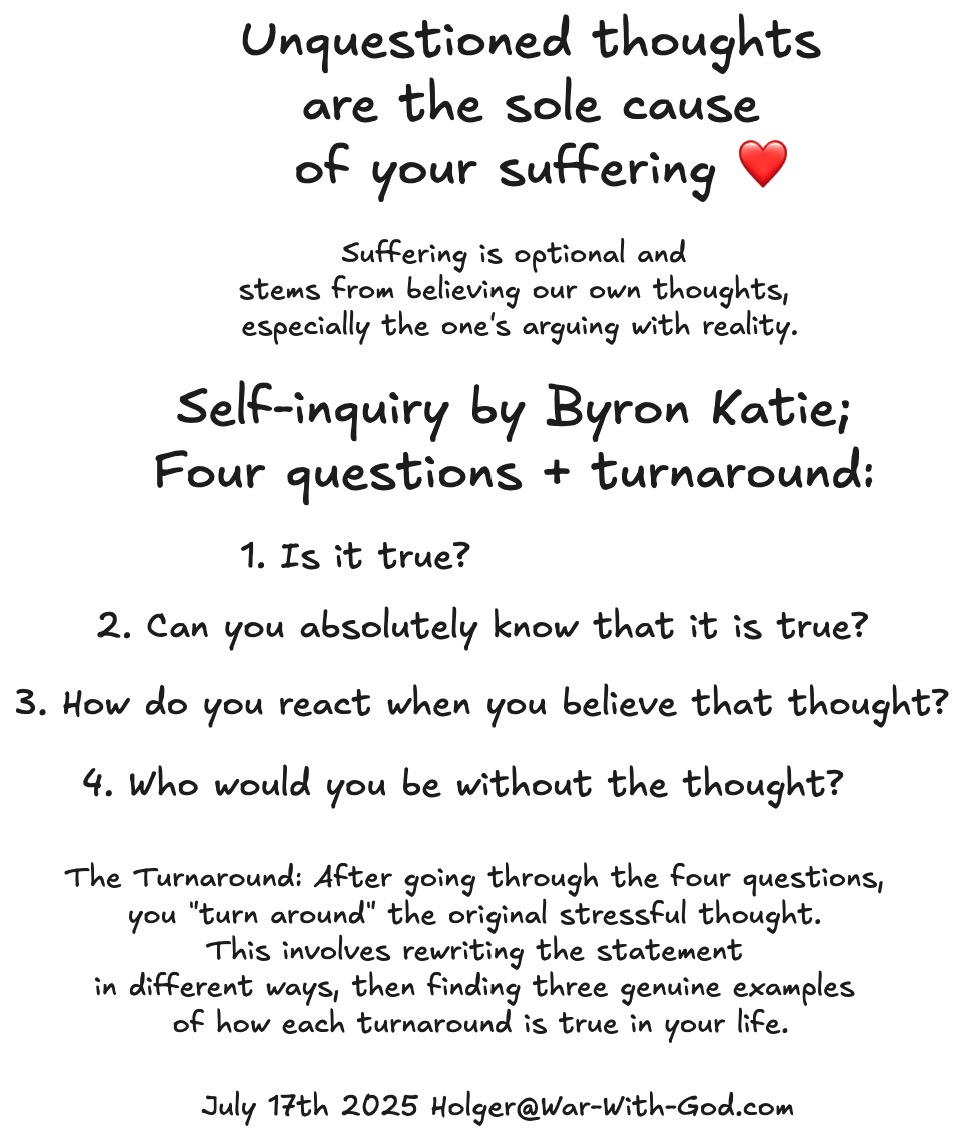Disclaimer: The following text has been generated by ai.
The Turnaround: After going through the four questions, you “turn around” the original stressful thought. This involves rewriting the statement in different ways, then finding three genuine examples of how each turnaround is true in your life. This is not about self-blame but about discovering alternative perspectives that can bring peace.
There are typically three types of turnarounds:
• To the self: You apply the statement to yourself. For example, if the original thought is “She abandoned me,” a turnaround would be “I abandoned her” or “I abandoned me”.
• To the opposite: You state the opposite of the original thought. For example, “Paul doesn’t appreciate me” could become “Paul does appreciate me”.
• For “I don’t ever want to…” statements: These are turned around to “I am willing to…” and “I look forward to…”. This encourages you to fully embrace life without fear and be open to reality, understanding that uncomfortable feelings are a call to inquiry and an opportunity for self-realization.
The Work emphasizes that as long as you believe the cause of your problems is “out there,” the situation is hopeless, and you remain a victim. By bringing the truth home through inquiry and the turnaround, you begin to free yourself, realizing that your unquestioned thoughts are the sole cause of your suffering. This process leads to a state of being “a lover of what is,” where reality is always perceived as good, regardless of external circumstances.
Source: notebooklm.google.com

Leave a Reply